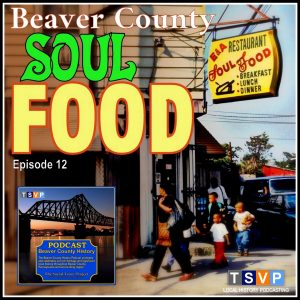Gallery with alias: PUBLIC_HISTORY_BLOG_POSTS not found

You Call That Real Food?
Thoughts on food heritage for public historians
“Seriously, do you call this real Italian food?” exclaimed a disappointed patron at one of those touristy red-white-green strip mall eateries.
“Sure I do,” replied the twenty-something manager seemingly unfazed by the criticism. “Our food is as good as Olive Garden. What’s wrong with it?”
Getting up to walk out, the patron laments, “Mio Dio! Mia nonna dall’Italia sta rotolando nella sua tomba. Forgive them, Grandma!”
[lgc_column grid=”50″ tablet_grid=”50″ mobile_grid=”100″ last=”false”]
People sometimes get feisty about food, especially if their cultural sensibilities and personal experiences around cuisine are insulted (perhaps even assaulted). “Do you call this [fill in the blank] real [fill in the blank] food?” It’s a wailing complaint heard most often in reaction to audacious (failed) assertions of cultural or ethnic food authenticity—as in those marquee proclamations of real Italian or real Mexican, Chinese, Lebanese, French, Greek, Indian, or Southern Soul food.
If a restaurant has to proclaim its food’s cultural authenticity, that’s just dubious marketing. It’s akin to best burgers in town, best burritos, or voted #1 Texas BBQ in Boston. Are these claims just hype, false advertising, or misguided but sincere claims in the minds of chefs?
[/lgc_column] [lgc_column grid=”50″ tablet_grid=”50″ mobile_grid=”100″ last=”false”]No matter, Cave comedenti. Eater beware.
We live in an age of mass produced authenticity. Faking genuineness is big business in everything from designer fashion to craft beer. However, although we pretend to loathe artificiality in people and things, we are actually very accepting of it. Hollywood banks on it. Designers, architects, and engineers depend on it. That beautiful old-world stonework around that stunning wood fireplace in that new mansion? It’s all pressed plaster. The fire is gas. And the house really is a flimsy shell of thin lumber and pressed particle board. Looks impressive, though.
[/lgc_column]“Don’t eat anything your great-grandmother wouldn’t recognize as food.”
~Food writer Michael Pollan
When attempting to understand cuisine as an important component of culture, history, and heritage, it pays to use discretion. Not all food is authentic, genuine, or historically significant. (On the other hand, maybe all that matters is that people like Boston Texas BBQ).
The topic of food is a minefield of opinions. There’s no accounting for taste, the Romans would say, it makes no sense to argue over food. I like tomatoes and you like artificially colored high fructose sweetened tomato celluloid concentrate puree. De gustibus non est disputandum.
Of course, gourmet meals and microwave dinners have legitimate places in food history, just as television sitcoms and pop music have their place in the arts. But to understand food and cuisine as specific elements of history and heritage, we have to think of food more critically in terms of the social, economic, and political dimensions driving everything from archaeology to agricultural colonialism, canned fruit, church fish frys, Grandma’s Thanksgiving turkey, farm factories, pesticides, organic berries, meatless Mondays, TV dinners, Victory Gardens and wartime rationing, heirloom seeds, GMOs, self-serve supermarkets, the carbon footprint of food transportation, frozen pirogies vs. homemade, lite beer, salted butter, restrictions on trans fats, bacon grease in mom’s family pork chop recipe, etc.
Food is a complicated story.
As public historians, understanding and conveying food heritage is not just a matter of taste. Beyond the simplest question of “what’s that taste like?” we can also ask why in communities certain foods are eaten and prepared in particular ways and during certain times? Why are certain ingredients used or preferred over others? What social roles exist around food? How do we learn about food and who are the keepers of food knowledge?
WHAT’S YOUR FOOD STORY?
It is not enough for historians to dryly describe, display, and offer samples of the cuisine(s) defining our food heritage; we have to provide historical context and social perspectives. Despite what the Romans thought, we all have “our tastes” in food, and perhaps there’s no better way to understand these subjectivities than through the stories we tell about food.
Public historians should creatively and fully reveal the wonderful human experience around food because it is so closely tied to being human. Food is woven into our traditions, customs, and identities. And it is there that public historians will perhaps find the most relevant and deeply fascinating understandings of food in the stories we tell about food.
Listen to this montage of voices from The Social Voice Project‘s ongoing Beaver County Food Heritage oral history project.
On episode 12 of the Beaver County History Podcast, we talk with Karen Florence and Florence Cuspard Lott about the African-American experience in Beaver County, and why it is important to recognize soul food as a significant part of black history and heritage.
LISTEN TO THE PODCAST


This post is inspired by the Huffington Post article: These Black Pitmasters Are Hustling To Preserve Barbecue’s Roots: The popularity of Texas-style barbecue has white-washed a cuisine that was rooted in Native American and African heritage. These black pitmasters are trying to keep history intact.
PUBLIC HISTORY MATTERS
At The Social Voice Project, we celebrate history and people through our community oral history projects that give us a chance to look, listen, and record the voices and stories of our time. We encourage all local historical societies and museums to capture, preserve, and share their communities’ lived experiences, memories, customs, and values. Future generations are depending on it.
Contact TSVP to learn more about our commitment to public history and community oral history projects.


You must be logged in to post a comment.